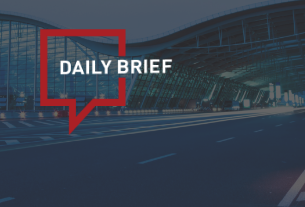The sheer suddenness of the Covid-19 pandemic thrust businesses across sectors into a deep downward spiral. Granted, it has been over a year since Covid first hit us, and that a vaccine is now available across the world. However, the ripple effect is yet to subside.
While businesses are slowly getting back on to their feet, they are met with the fear and apprehension prevalent among their customers. None else is more affected than the travel and tourism sector, which by virtue of being a non-essential luxury is finding it hard to regain its earlier glory.
The civil aviation sector and its path to recovery
With the number of new Covid-19 cases in most countries witnessing a downward trend, also aided by the fact that most countries are now gradually relaxing the restrictions that were previously imposed, people are slowly venturing out of their comfort zones and opting to take up both domestic and international travel.
Robin Chiang, General Manager (EMEA) for KAYAK, an international online travel agency and metasearch engine has been closely tracking the advances in the travel sector with a specific focus on airline travel. He observes that the travel trip duration has changed from pre-covid times, with people spending longer times on international travel. He attributes this to the mandatory quarantine measures in place in most destination countries, which in turn extends the duration of the vacationer’s trip.
Another key factor that plays a role in longer trip durations is the reduced costs of vacationing stemming from hotels that are running on low occupancy and hence providing better deals and savings to the traveler, prompting them to stay longer.
While inter-regional travel duration spiked due to the Covid restrictions in place, the intra-regional travel duration remained almost unchanged for most locales including North America (NORAM), Latin America (LATAM), and Asia Pacific (APAC) regions. However, Europe, Middle East, and Africa (EMEA) reported a slight variation with decreased durations in the summer arising from loosened restrictions.
On the pricing front, most regions reported a fall in prices for inter-regional travel due to supply-demand disparity. EMEA again was the exception, presumably because airline operators had to follow stringent distancing norms, resulting in a massive reduction of operating capacity.
Another phenomenon that was observed was the massive increase in last-minute travel, with opportunistic booking based on pricing and impending regulatory changes.
Users are engaging more frequently with KAYAK’s Flexible Filters and Covid Hub. The former helps users determine which flights can be flexibly rescheduled without getting penalized, which is the need of the hour considering the general air of uncertainty surrounding covid-related travel. Covid Hub, on the other hand, shows a daily updated map of 215 countries and their corresponding travel restrictions in place due to Covid. This has gained recognition from Forbes as one of the most reliable sources of travel restriction information.
Newly emerging user patterns
Apart from the points mentioned earlier, users are also looking at sustainable and environmentally friendly flight options, thus making it necessary for flight operators to be multimodal in their approach towards pricing and availability.
Workcations: Owing to the changed work policies that allow employees to work remotely, people are now looking at vacationing in a new light. With countries like Bermuda offering ‘Work from abroad’ visas, as well as domestic travel and stay becoming more affordable, workcationing is slowly gaining traction, thereby opening a new opportunity for ailing airlines and hotels.
Rental Cars: With concerns of health and sanitation, more and more people prefer a single means of conveyance while on vacation. This has resulted in an upsurge in the number of rental cars being booked for long periods.
Online Travel Agencies vs. Direct Operator Ticketing: Chiang feels that there has been no major change in the patterns concerning user’s choice of booking portals.
Desktop vs. Mobile booking: Again, Chiang observes that there has been no major shift in the preferred medium of booking.
Airline market patterns and volatility
Post the holiday season, airlines have seen a sharp dip in revenue which can be attributed to stringent restrictions being put in place by most countries. Resultantly, airline fares dipped drastically in January and February.
Most Origin and Destination (ONDs) that are showing a downward trend are from the Europe region, which has seen the highest number of restrictions being put in place, specifically to curb the second and third waves of the pandemic.
The most volatile routes in terms of fares for the past 6 months were in the Europe, China, and India region, thus prompting airline revenue managers in these locales to look at and adjust the pricing in real-time.
Such volatility is expected to continue until 2022, where pent-up demand spikes will continue to be observed during periods of restriction relaxation. To combat this, it is essential to revisit forecast techniques by requesting for leading indicators data from reliable providers, which can help predict these demand spikes.
Also, with domestic travel being key to recovery, airlines need to focus more on the ancillaries.
Technology and digital transformation to the rescue?
Brian Wishlinski, Director - Partners and Alliances from PROS, an AI-powered dynamic pricing provider working closely with RateGain, courtesy of a recent partnership, feels that revenue management systems and technology need to be updated to tackle volatility in the current scenario.
With last-minute bookings on the rise, airlines are looking for new sources of data to predict demand and adjust fares accordingly. Supply is probably recovering faster than demand, which makes it imperative for revenue managers to anticipate demand based on external factors such as countries removing restrictions.
“In such recovery situations, rapid changes are seen in the pricing environment. This makes competitive intelligence information like that provided by RateGain much more important than ever and to be able to integrate that data with your revenue management solution is invaluable, especially for fare analysts.” opines Brian.
Airlines are now using this recovery phase as a ground to be innovative. Concepts like dynamic and continuous pricing provide the airline with extended flexibility in terms of additional price points in the pricing curve.
Through dynamic offers, real-time shopping and pricing options can be provided to the customers, offering them an elevated experience. Airlines also need to step up their digital and eCommerce solutions to capture more of the customer’s wallet share by becoming their one-stop solution for all requirements.
Historical data, which once used to be the mainstay of revenue managers while deciding on the pricing is now virtually rendered useless. The traditional means of pricing based on time to departure is now irrelevant because most of the bookings seen in the post-covid scenario are being made in a shorter, condensed booking window of a few hours or days at most.
“Revenue management teams are struggling with the lack of data sources to predict demand and consequently price flights. It is important to leverage the combined knowledge of the RM and the pricing team to align with the overall goals. It is important that all teams involved remain agile through this phase.” says Ciaran Brannigan, Ex-director of Revenue, RyanAir.
In conclusion, airlines need to be flexible to deal with the bumpy ride that awaits them on the irrefutable path to recovery.




